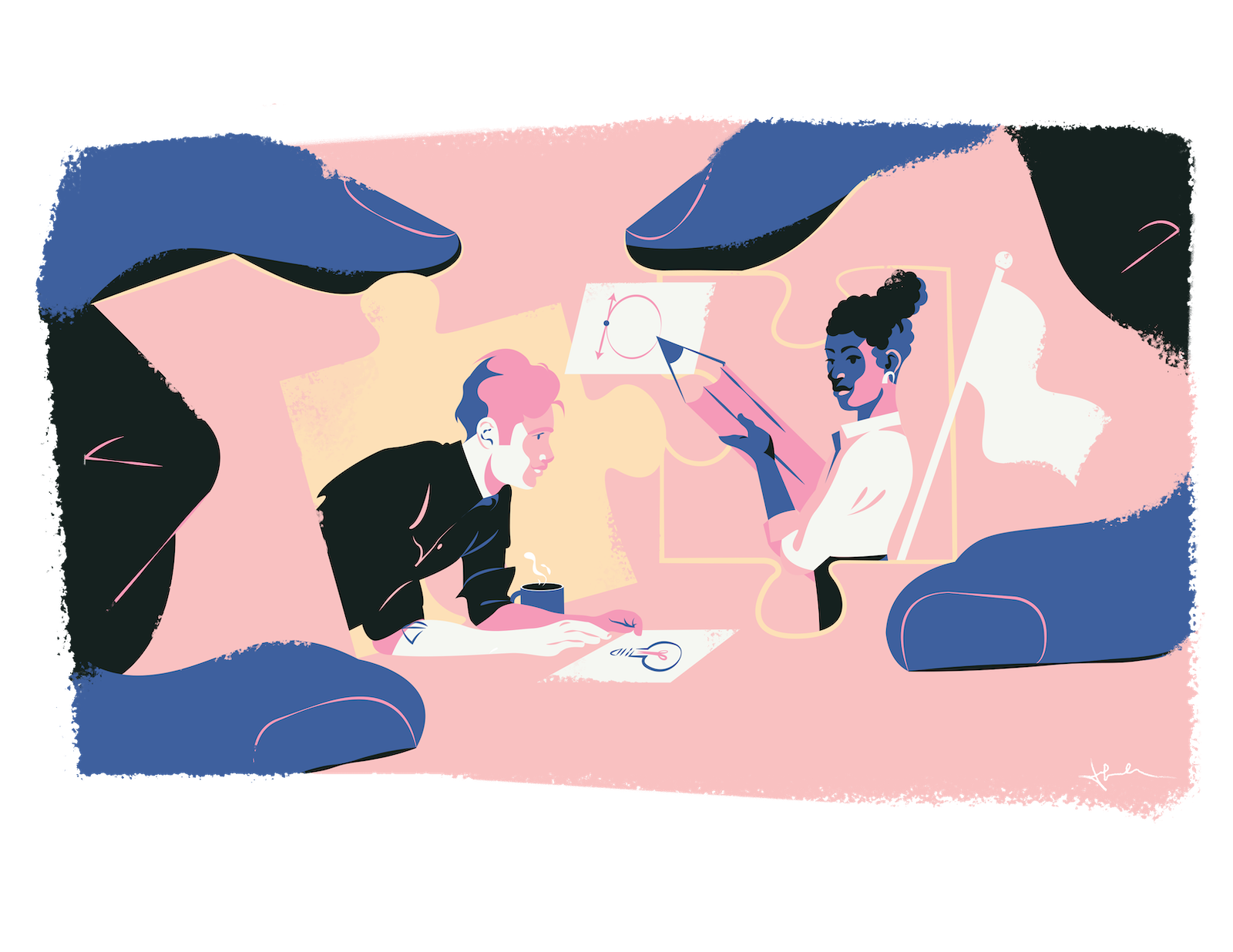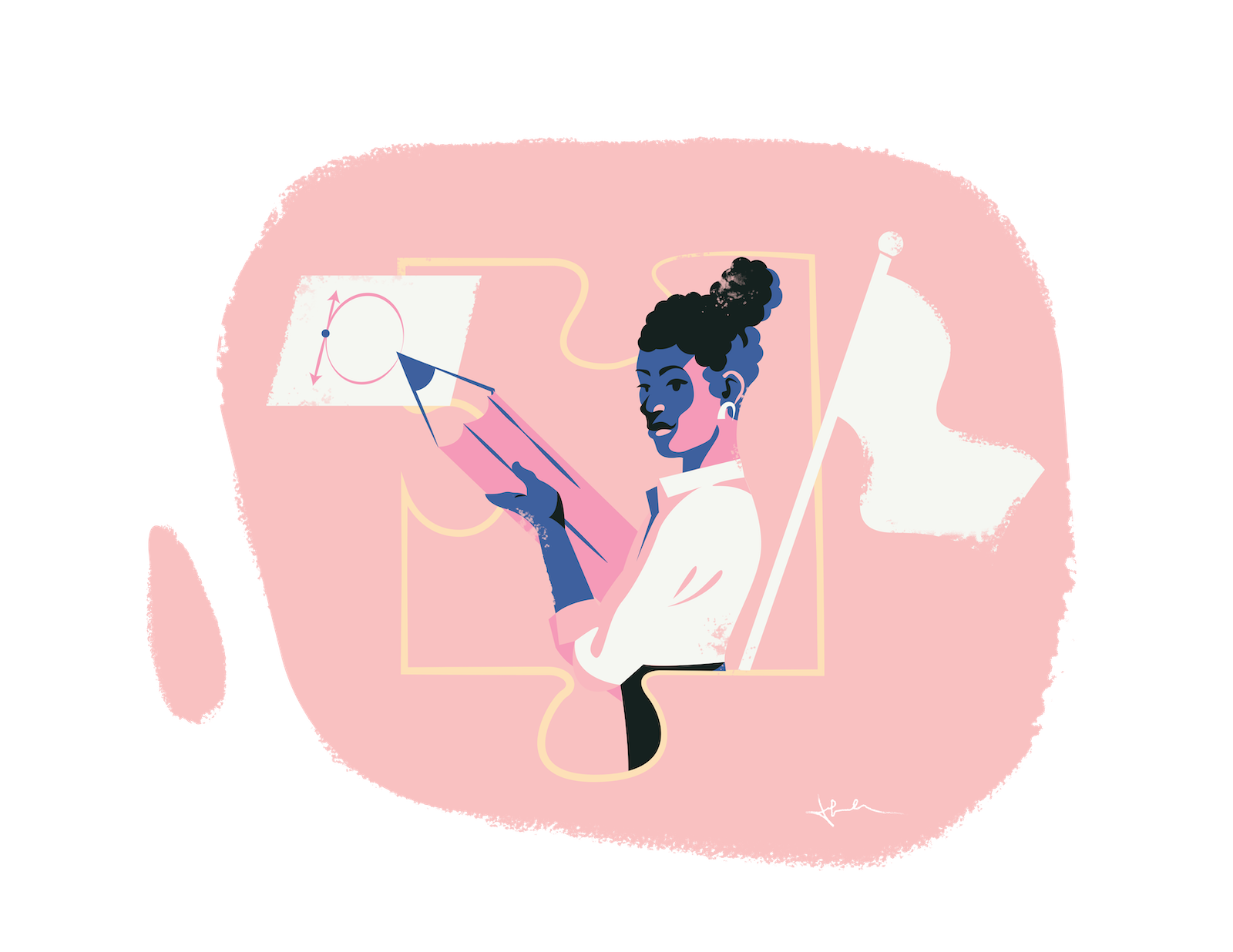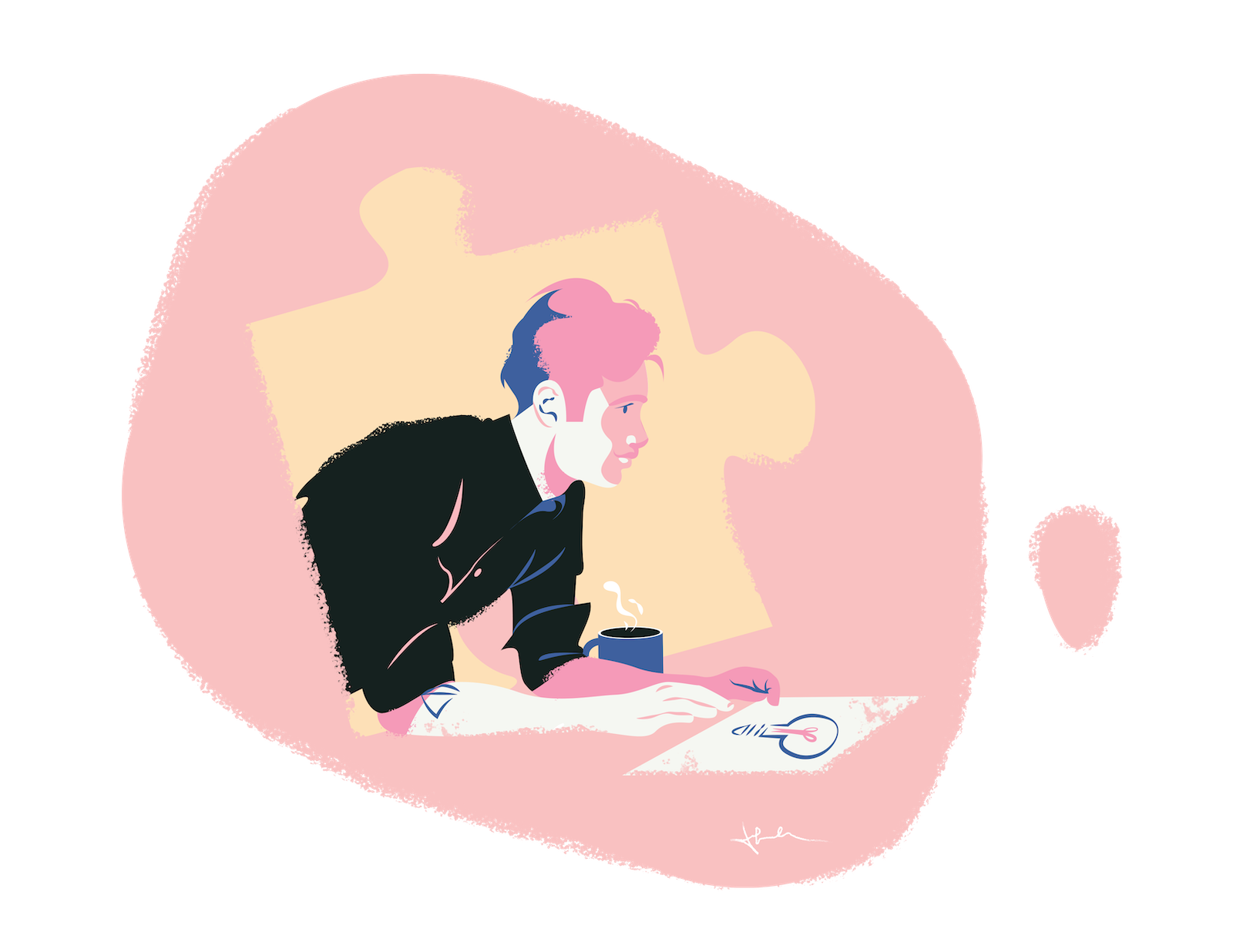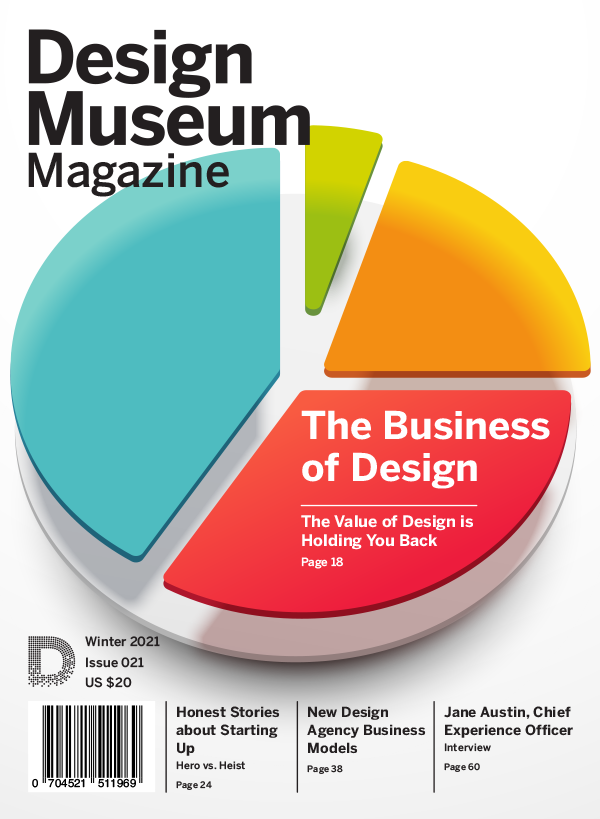ONLINE EXCLUSIVE
The Future of Design is Independent

By Ed O’Brien, Growth and Strategy, Other Tomorrows.
Artwork by Jen Ashman-Stauss, Head of Envisioning, Other Tomorrows.
Over the last several years I’ve contemplated the future of air travel, media and entertainment, restaurants and retail, housing, and education, on behalf of a fascinating collection of clients, through the lens of design and innovation. But what about the future of the field I’ve dedicated my career to since 2013? Similar to other industries, the world of professional design services has undergone its own dramatic shift brought on by several key factors including the pandemic. I believe that nimble, independent design firms are poised to have explosive growth in the coming years and here’s why:
During the last decade, large management consultancies, software engineering companies, IT firms and even large brands have snapped up a plethora of highly reputable independent design firms – Lunar, Frog, Adaptive Path and Fjord among many others. Why? It’s enticingly quicker and cheaper to purchase high-end design talent, introduce a new capability and acquire a roster of quality clients, then it is to build any of these from scratch. For design firms, hiring and retaining design practitioners, building a healthy culture, and developing an enviable book of clients takes years if not decades.
At least on paper, these adjacent businesses make perfect sense to merge. Business design is a close cousin of strategy consulting. Brand design is fairly close to work executed at creative agencies. UI/UX design and software development have been frenemies since the dawn of digital. And it’s risky for any IT consultant to recommend a new technology platform without first deeply understanding intended users. So with all the recent design firm acquisitions, what could possibly go wrong?
Fixation Toward Integration
According to Harvard Business Review, 70-90% of acquisitions fail regardless of business vertical. And design services are no exception. Respectable salary bumps, stock awards, and other retention programs are not enough for acquired firms. New team members are often not on the same page with power dynamics tilted heavily in favor of the acquiring firm. Key people leave, leading to a brain drain. And the acquired company, who inevitably gives up their independence, settles into a funk of demotivation with output quality suffering. Rather than trying to understand and leverage the acquired firm’s strengths and success factors, the acquirer believes they can fix underlying problems through greater “integration,” which ironically only exacerbates pain points. Clumsy brand repositioning, new venn diagrams to “leverage organizational synergies” and suddenly larger project teams (account managers, program managers, business developers, engagement managers) are all tactics deployed to stop the bleeding. To quote a former client colleague, “Nothing says we’re still figuring things out and don’t give us your money like using four different fonts or brands or a room full of career consultants talking over each other…even if you don’t know why, things seem vaguely off, undermining trust.”

Should I Stay or Should I Go?
Seasoned design practitioners are faced with difficult choices. To be fair, some assimilate to the new culture while others are able to summon an internal optimism that conditions will improve or a new opportunity will present itself. Those who decide to exit are met with two alternative paths – join (or start) an independent design firm or immigrate to the client side (in-house).
The latter has been the primary beneficiary of design talent and that trend has accelerated since the start of “The Great Resignation” (1) (a phase originally coined by Anthony Klutz, an organizational psychologist to describe people leaving their jobs, brought on by the pandemic, that has led many to re-consider how, why and where they work). Today’s design talent is more likely to switch jobs than ever before and large companies, who are now wise to Design Thinking (2), have been systematically acquiring these clever problem solvers. Whether it’s an insurance company, an airline, or a toy company, the c-suite is now fully aware that being more customer-led and hiring in-house design talent leads to competitive advantage. Beside their inherent ability to play nice and share, designers bring creativity, business savvy and an outside-in perspective to solving intractable problems. These are extremely attractive qualities to corporations who historically struggle to bring innovation forward. This is where the market for design services is getting most interesting.
Developing Mastery at Speed
Client-side designers have a sophisticated understanding of high-quality design services. They know what quality outcomes look like and are under pressure to move quickly. Economics play a critical factor too, since they intuitively understand how long a quality engagement takes and what it should cost. In addition to their day job (chief design officer, head of design strategy, director of customer experience, etc.), they are increasingly pulled into every difficult problem a company faces – hybrid/remote work models, office redesigns, employee experience, environmental and sustainability issues, and high-impact technology investment decisions, to name a few. However, the mission is often more ambitious – push the company to be more innovative and more customer-led. It’s a lot to ask and client-side designers increasingly need help. Design help.

Baked Fresh Daily
Independent design firms that hold the same values and shared experience have become the preferred choice for client side design talent. The unmatched energy, approachability, and refreshingly unbiased point of view is worth paying for. The output is bespoke, there’s no hidden agenda, and they won’t overstay their welcome. When it comes to client engagements, details matter to independent design firms. There’s a lot on the line if an engagement goes poorly, and they are eager to do right by clients. By first asking the right questions, they quickly surface the most salient insights and pull together concepts and prototypes with a compelling narrative. They make transformation seem within reach. Since they tend to thrive with a healthy variety of challenges, and are under no pressure to hyper-specialize within industry domains, independent design firms bring a humility and curiosity-seeking perspective to every engagement. You generally get more than you pay for… and it’s fun, too.
What independent design lacks in size and scale, they more than make up for with mutually beneficial contracts and engagements that result in actionable outcomes. As the merger and acquisitions dust has settled in the design services category, knowing who to trust and where to turn has become significantly more complex. Similar to the industry lions, such as IDEO, who defined this category so many years ago, independent design firms have both the empathy and hunger to tackle today’s complex business environment. Pragmatic leaders should look no further than independent design firms for help.
